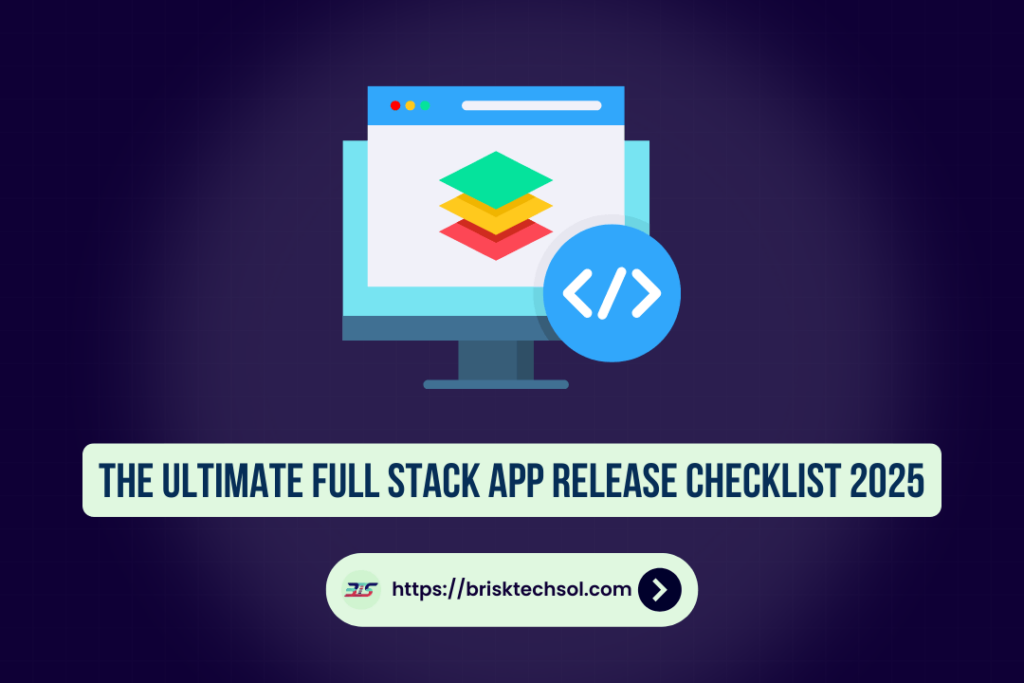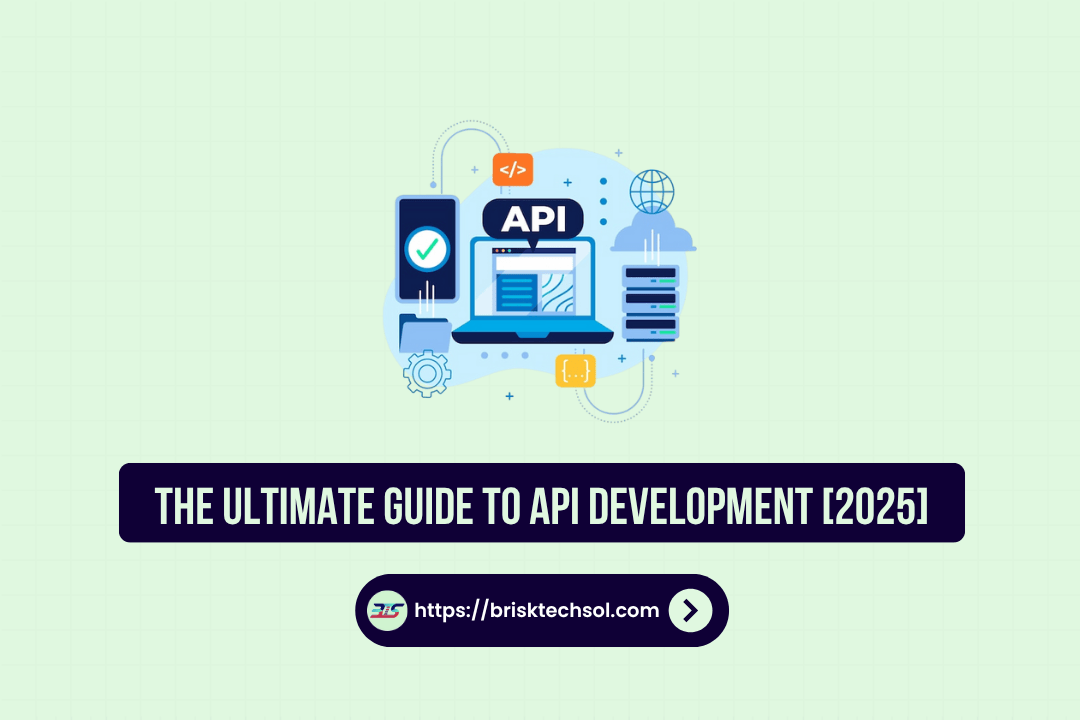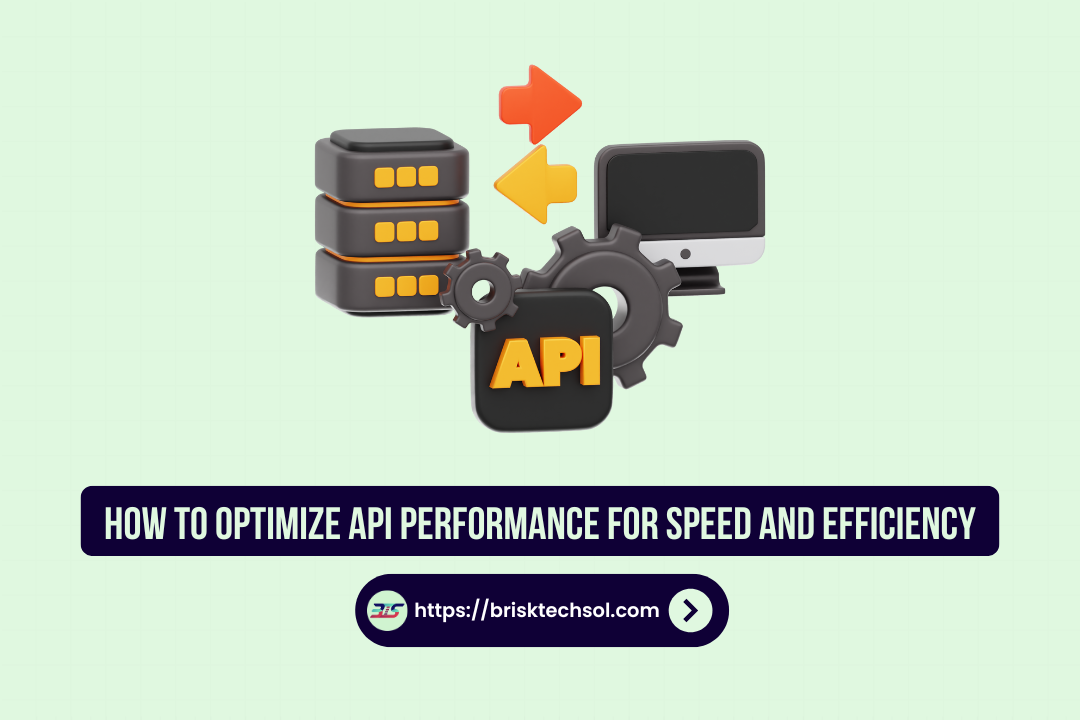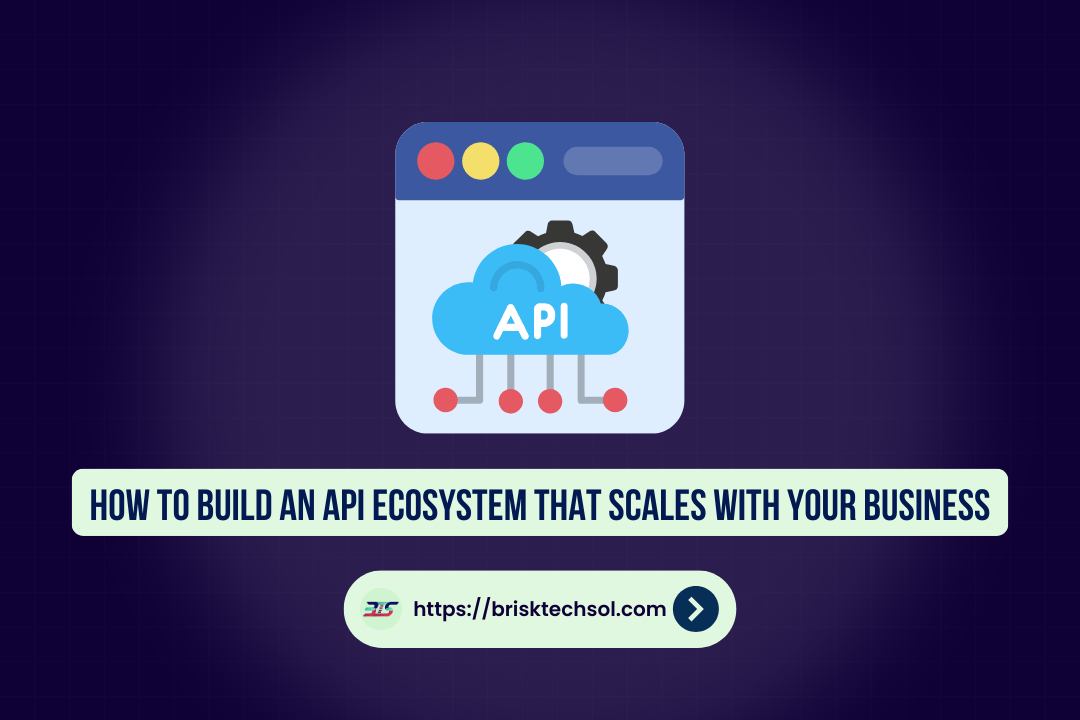Development environment, a well-defined full stack app release checklist is essential. This guide covers every step from pre-release planning to post-deployment monitoring ensuring error-free, smooth releases. By following our comprehensive checklist, incorporating best DevOps practices and CI/CD processes, you can streamline your software launch and maximize performance from day one.
Full Stack App Release Process
Releasing a full stack application involves multiple phases, from the initial planning and design to the final deployment and monitoring stages. In this section, we define what a full stack app release entails and explain its lifecycle. At the core of this process are the principles of continuous integration (CI) and continuous delivery (CD), both of which are essential for achieving high-quality, timely releases.
What Is a Full Stack App Release?
A full stack release covers every layer of an application from front-end interfaces to back-end services and databases. This process ensures that every component is tested, integrated, and deployed in harmony. By implementing a comprehensive release checklist, teams can avoid common pitfalls such as integration errors, downtime, and performance bottlenecks.
The Lifecycle of a Software Release
A typical release lifecycle includes planning, development, testing, deployment, and post-release monitoring. Each phase requires strict adherence to best practices:
- Planning: Requirements gathering, design documentation, and risk assessment.
- Development: Coding with continuous integration, automated builds, and unit testing.
- Testing: Quality assurance, integration testing, and user acceptance testing.
- Deployment: Using strategies such as blue-green deployments or rolling updates.
- Monitoring: Real-time tracking of performance metrics and quick resolution of issues.
Key Concepts: CI/CD, DevOps, and Automated Testing
Implementing CI/CD pipelines is crucial. Companies that adopt CI/CD report a dramatic decrease in release errors. DevOps methodologies further enhance collaboration between development and operations teams, ensuring that releases are smoother and more reliable. Automated testing tools—ranging from unit tests to performance stress tests—play a vital role in validating every change before it reaches production.
Quick Table: The Release Process Overview
| Phase | Key Actions | Responsible Team |
|---|---|---|
| Planning | Requirement gathering, risk analysis | Product/Engineering |
| Development | Coding, unit testing | Development |
| Testing | QA, integration, security tests | QA/DevOps |
| Deployment | Live release, monitoring | Operations/DevOps |
By understanding these foundational elements, teams can build a robust full stack app release checklist that improves both efficiency and quality.
Pre-release Checklist – Planning and Preparation
Before pushing any code to production, thorough planning and preparation are imperative. The pre-release checklist ensures that every element of the release is scrutinized and validated, reducing the risk of post-deployment failures. Here we detail the essential steps in pre-release planning.
Code Review and Quality Assurance
A rigorous code review process is the first step in quality assurance. Peer reviews help catch errors early, ensuring that the codebase is secure and maintainable. Tools like Git and Bitbucket facilitate version control while automating parts of the code review process. Data indicates that teams employing systematic code reviews can reduce deployment errors by over 30%.
User Acceptance Testing and Beta Feedback
Before the final release, beta testing with real users can identify unforeseen issues. Incorporating user feedback early in the cycle helps fine-tune the product. User acceptance testing (UAT) is essential for confirming that the application meets business requirements and performance benchmarks.
Risk Assessment and Version Control
Proper risk assessment involves identifying potential pitfalls—such as integration errors or security vulnerabilities—and establishing contingency plans. Version control systems ensure that you can roll back changes quickly if needed. Documenting each change and maintaining detailed logs are best practices that contribute to a smoother release process.
Quick Table: Pre-release Task Checklist
| Task | Description | Assigned Team |
|---|---|---|
| Code Review | Peer evaluation for code quality | Development |
| Automated Testing | Execute unit and integration tests | QA |
| Security Audit | Vulnerability scanning and risk analysis | Security |
| User Acceptance Testing | Collect beta feedback and validate requirements | QA/UX |
Relevant Data and Statistics
- Studies show that companies with a robust pre-release checklist see up to a 40% increase in release success rates.
- Automated testing and thorough code reviews reduce the incidence of post-release bugs by nearly 35%.
Key Takeaways:
- A comprehensive pre-release checklist minimizes risk.
- Collaboration between development, QA, and security teams is essential for a smooth transition from staging to production.
- Documenting every step ensures traceability and accountability throughout the release process.
By integrating these practices, organizations not only secure the quality of their software but also streamline the entire release process, making it both predictable and efficient.
Deployment Strategies for Full Stack Applications
Selecting the right deployment strategy is critical for a successful full stack app release. Different strategies offer varying benefits, and choosing the correct one depends on your application’s needs and the desired user experience.
Overview of Deployment Strategies
Deployment strategies include blue-green, canary, and rolling updates. Each method aims to minimize downtime while ensuring that any issues can be quickly addressed without affecting end users.
Blue-Green Deployment
In a blue-green deployment, two identical production environments are maintained. The “blue” environment represents the current live version, while the “green” is the new release. Once the green environment is fully tested, traffic is switched from blue to green. This method significantly minimizes downtime and provides an instant rollback mechanism.
Canary Releases and Rolling Updates
Canary releases allow a small subset of users to experience the new version before a full rollout, enabling teams to monitor real-time performance and feedback. Rolling updates gradually replace the old version with the new one across multiple servers, reducing the risk of complete failure.
Quick Table: Deployment Strategy Comparison
| Strategy | Benefits | Drawbacks |
|---|---|---|
| Blue-Green | Minimal downtime, instant rollback | Requires duplicate infrastructure |
| Canary | Early feedback, controlled rollout | More complex monitoring |
| Rolling Update | Gradual transition, lower risk | Potential for version inconsistency |
Evaluating Downtime and Rollback Procedures
Statistical data reveal that blue-green deployments can reduce downtime by up to 90%, whereas canary releases help in identifying issues early on, thus preventing widespread impact. It is essential to have robust rollback procedures for each strategy, ensuring that any deployment can be reversed quickly if performance metrics fall below acceptable levels.
Key Considerations:
- Evaluate the infrastructure costs versus the benefits of minimized downtime.
- Establish clear rollback protocols and continuously monitor key performance indicators (KPIs) during the deployment phase.
- Use automated deployment tools to facilitate smooth transitions and accurate monitoring.
This section emphasizes that choosing the right deployment strategy is not one-size-fits-all; instead, it should be based on your application architecture, user base, and operational requirements.
Post-release Checklist – Monitoring and Optimization
After the release, continuous monitoring and optimization are crucial to ensure that the application performs as expected. Post-release activities focus on tracking performance metrics, resolving bugs, and gathering user feedback.
Monitoring Tools and Key Performance Indicators (KPIs)
Using monitoring tools like New Relic, Datadog, or Splunk is essential for real-time performance tracking. KPIs such as response time, error rates, and resource utilization should be monitored continuously. This data provides insights into how the application performs under real-world conditions and helps in identifying any issues that require immediate attention.
Bug Tracking and Performance Analytics
A robust bug tracking system is crucial for quick identification and resolution of issues. Integrating tools like Jira or Bugzilla with your CI/CD pipeline can streamline the process of logging and addressing bugs. Performance analytics should be reviewed frequently to understand the impact of new releases on system stability and user experience.
Continuous Improvement and Feedback Loops
Collecting user feedback through surveys, support tickets, and social media is vital for future improvements. Establishing continuous improvement loops ensures that each release is better than the last. Post-release optimization includes updating documentation, fine-tuning system configurations, and scheduling maintenance windows for long-term stability.
Quick Table: Post-release Monitoring Tools
| Monitoring Tool | Key Features | Best For |
|---|---|---|
| New Relic | Real-time insights, alerts | Performance monitoring |
| Datadog | Comprehensive log analytics | Full stack observability |
| Splunk | Data analytics, troubleshooting | Large-scale deployments |
Relevant Data and Success Metrics:
- Companies that implement continuous monitoring see a 30% improvement in performance metrics within the first month of release.
- Regular post-release reviews can lead to a significant reduction in customer-reported issues.
Key Takeaways:
- Real-time monitoring and proactive issue resolution are essential to maintain system performance.
- Regular feedback loops and data-driven insights help in making informed decisions for future releases.
By focusing on post-release monitoring and optimization, teams can ensure that their full stack application not only meets initial performance benchmarks but continues to improve over time.
Tools, Techniques, and Best Practices
A successful full stack app release hinges on the right mix of tools, techniques, and best practices. In this section, we highlight essential DevOps tools and techniques that streamline the release process and ensure robust performance.
Essential DevOps Tools
Popular tools like Jenkins for continuous integration, Docker for containerization, and Kubernetes for orchestration are indispensable. These tools automate various parts of the release process, ensure consistent environments, and enable scalable deployments. Research shows that companies leveraging these tools achieve faster release cycles and improved software stability.
Techniques for Streamlining the Release Process
- Automation: Automate repetitive tasks such as testing, deployment, and monitoring to reduce human error.
- Continuous Integration: Ensure every code change is automatically built and tested.
- Containerization: Use Docker containers to maintain consistent development, testing, and production environments.
- Orchestration: Implement Kubernetes to manage container clusters effectively.
Industry Best Practices
Staying current with best practices is essential. Regular code reviews, comprehensive documentation, and detailed release notes ensure that every stakeholder is aligned. Adopting agile methodologies and continuous feedback loops also contributes to smoother releases and iterative improvements.
Quick Table: Comparison of Key Tools
| Tool | Purpose | Notable Feature |
|---|---|---|
| Jenkins | Continuous integration | Automated build pipelines |
| Docker | Containerization | Ensures consistency across environments |
| Kubernetes | Container orchestration | Scalability and self-healing |
Emerging Trends and Future Directions:
- Serverless Deployments: An increasingly popular approach for scalable, cost-effective releases.
- AI-Driven Monitoring: Leveraging machine learning to predict and prevent potential issues.
- Enhanced Security Protocols: Continuous updates to security practices to combat evolving threats.
Conclusion
Releasing a full-stack app is a complex process, but a structured checklist ensures a smooth, error-free launch. From code optimization to security testing, every step plays a vital role in success. By following this checklist, you can minimize risks, enhance performance, and deliver a seamless user experience. Stay proactive, test thoroughly, and launch with confidence!
FAQ’S
What is a full stack app release checklist?
A full stack app release checklist is a step-by-step guide that outlines all the critical processes and best practices for deploying a full stack application. It covers planning, testing, deployment, and post-release monitoring, ensuring that every component—from front-end to back-end—is properly integrated and optimized for performance. This comprehensive approach minimizes errors and improves the overall success rate of software releases.
Why is pre-release planning so crucial?
Pre-release planning is essential because it sets the foundation for a smooth deployment. By rigorously reviewing code, performing automated tests, and conducting thorough risk assessments, teams can identify and resolve potential issues before they affect production. This systematic preparation not only reduces downtime but also ensures that the final product meets quality and performance benchmarks, thereby enhancing user satisfaction.
Which deployment strategy is best for minimizing downtime?
Blue-green deployment is often favored for its ability to minimize downtime. By maintaining two parallel production environments, teams can switch traffic from the old version to the new version seamlessly. This strategy allows for immediate rollback if issues arise, ensuring continuous service availability and a smoother user experience.
How do monitoring tools enhance post-release performance?
Monitoring tools, such as New Relic and Datadog, provide real-time insights into application performance. They track key metrics, detect anomalies, and send alerts when issues occur. This enables teams to respond promptly to any performance degradation, ensuring that users enjoy a reliable and optimized experience.
What are the top DevOps tools recommended for full stack releases?
Key DevOps tools include Jenkins for continuous integration, Docker for containerization, and Kubernetes for orchestration. These tools automate and streamline the release process, ensuring consistency and scalability. Additionally, integrating monitoring solutions like Datadog enhances post-release performance tracking, making it easier to identify and resolve issues quickly.









